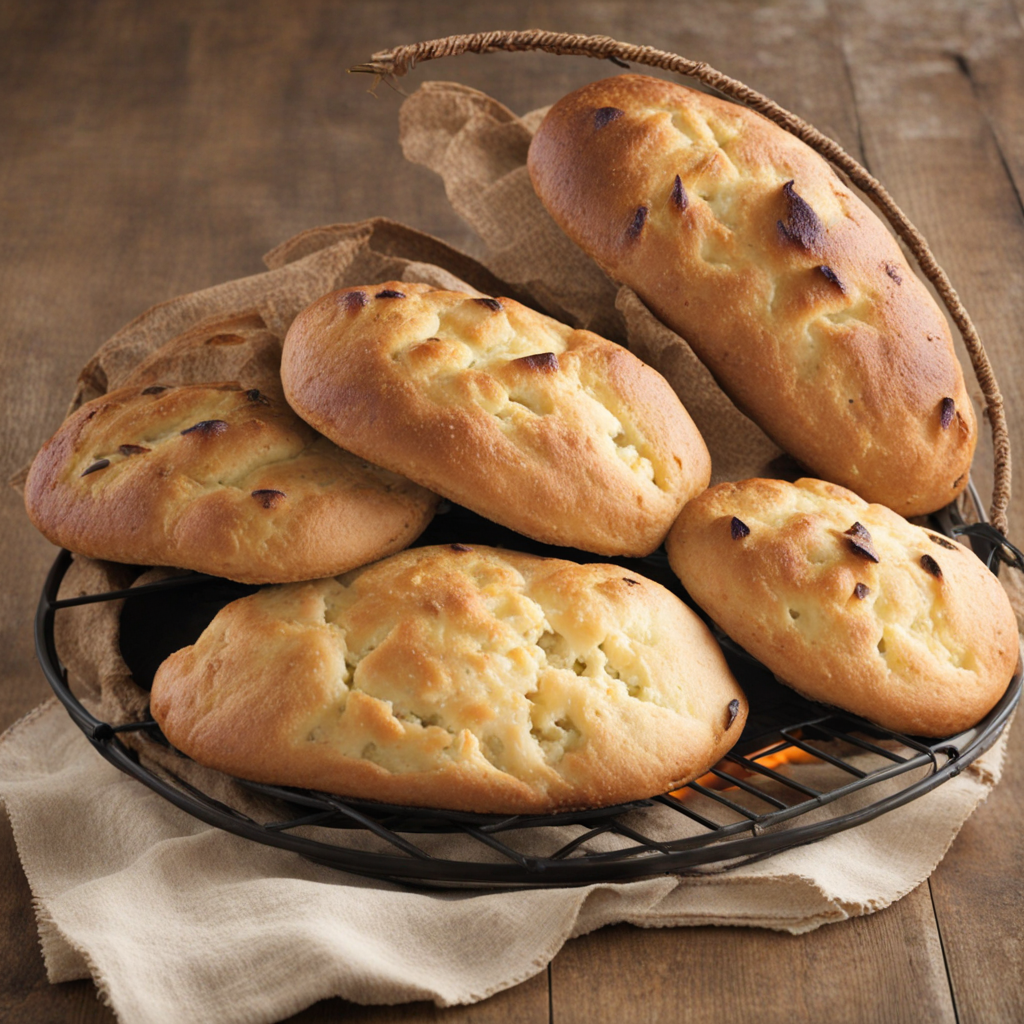Nanaimo Bars
Nanaimo Bars are a delightful no-bake dessert originating from Nanaimo, British Columbia, Canada. These bars consist of three distinct layers, each contributing to a harmonious blend of flavors and textures. The bottom layer is a crumbly base made from crushed graham crackers, cocoa powder, and shredded coconut, combined with melted butter and sugar to create a rich and slightly chewy foundation. This layer provides a satisfying crunch and a hint of chocolate, making it an enticing start to the indulgent treat. Above the base lies a creamy custard-flavored middle layer, typically made with a combination of butter, icing sugar, and custard powder. This layer is smooth and velvety, offering a sweet contrast to the denser bottom layer. The custard flavor adds a unique twist, making it unlike any other dessert you may have encountered. The combination of rich butter and the sweetness of icing sugar creates a luscious filling that practically melts in your mouth, inviting you to take another bite. The final touch is a glossy chocolate ganache that crowns the bars, adding a decadent finish. Melted chocolate is poured over the custard layer, setting to form a firm yet silky topping that enhances the overall experience. Together, these three layers create a symphony of flavors: the nuttiness of the graham cracker, the sweetness of the custard, and the richness of the chocolate. Nanaimo Bars are not only a treat for the palate but also a feast for the eyes, with their striking layers. This iconic Canadian dessert is sure to leave you craving more, offering a delightful taste of Canadian confectionery culture.
How It Became This Dish
The History of Nanaimo Bars: A Canadian Delight #### Origins Nanaimo bars, a quintessential Canadian dessert, are a no-bake treat that features a layered structure, combining a crumbly base, a creamy custard filling, and a rich chocolate topping. Their name derives from the city of Nanaimo, located on Vancouver Island in British Columbia, where they are believed to have originated. The exact timeline of the Nanaimo bar's creation is somewhat murky, but it is widely accepted that the dessert emerged in the mid-20th century. The earliest known recipe for the Nanaimo bar appeared in a 1952 edition of the "Nanaimo Daily News." This recipe called for a base made of crushed graham crackers, cocoa powder, coconut, and nuts, a custard-flavored middle layer, and a chocolate glaze on top. While similar layered desserts existed in various forms across North America, the Nanaimo bar distinguished itself through its unique combination of flavors and textures, and its name quickly became synonymous with the city itself. #### Cultural Significance The Nanaimo bar has become more than just a dessert; it is a symbol of Canadian culinary innovation and regional pride. It represents the spirit of home baking that is cherished across the country, evoking feelings of nostalgia and comfort for many Canadians. The dessert's popularity has allowed it to transcend regional boundaries, becoming a beloved treat not only in British Columbia but throughout Canada and beyond. The cultural significance of Nanaimo bars extends into various aspects of Canadian society. They are frequently featured at potlucks, bake sales, and family gatherings, embodying the communal nature of food in Canadian culture. The dessert is often associated with summer barbecues and holiday festivities, serving as a sweet reminder of home and tradition. Moreover, the Nanaimo bar has become an emblem of Canadian identity. In a country that celebrates its diversity and regional specialties, the Nanaimo bar stands out as a unifying dessert that can be appreciated across cultural lines. The dessert has even inspired a variety of adaptations, with bakers experimenting with flavors like peanut butter, matcha, and even vegan alternatives, while still maintaining the core essence of the original recipe. #### Development Over Time As the Nanaimo bar gained popularity, its recipe evolved to reflect changing tastes and dietary preferences. The traditional version, with its three distinct layers, has remained the most recognizable, but the adaptability of the bar has spurred numerous variations. For instance, some recipes replaced the graham cracker base with Oreo cookies or introduced nut butters for added richness. Others have experimented with flavoring the custard layer with ingredients like lemon or raspberry, providing a fruity contrast to the chocolate. In the 1970s and 1980s, the Nanaimo bar began to gain national recognition, appearing in cookbooks and food magazines. It was during this time that the dessert was often featured in Canadian-themed cookbooks, solidifying its place in the canon of Canadian cuisine. The popularity of the Nanaimo bar reached a peak in the 1990s, when it became a staple in both home kitchens and commercial bakeries across Canada. This decade also marked the rise of the internet, allowing recipes and variations to spread rapidly, leading to a surge in creative adaptations. The dessert's fame further grew with the promotion of Canadian cuisine on the global stage. Food festivals and events celebrating Canadian culture began to highlight the Nanaimo bar, showcasing its unique characteristics to international audiences. In 2005, the city of Nanaimo even went so far as to declare the Nanaimo bar as its official dessert, further solidifying its status as a cultural icon. In recent years, the Nanaimo bar has also found its way into the realm of gourmet desserts. High-end bakeries and restaurants have crafted their own upscale versions, sometimes incorporating artisanal ingredients such as single-origin chocolate or homemade custard. This evolution showcases the dessert's versatility and its ability to adapt to contemporary culinary trends while remaining deeply rooted in Canadian tradition. #### The Nanaimo Bar Today Today, Nanaimo bars can be found in various forms and settings, from traditional recipes made in home kitchens to innovative versions sold in specialty bakeries. They are a staple at Canadian festivals, and they often appear on menus in restaurants that celebrate local cuisine. The treat has also inspired food bloggers and social media influencers, leading to a resurgence of interest in the dessert among younger generations. The Nanaimo bar has also been embraced by the tourism industry, with Nanaimo itself leveraging the dessert as a point of attraction. Local cafes and bakeries offer variations of the classic recipe, inviting visitors to sample the local delicacy. The city hosts events, such as the "Nanaimo Bar Trail," where tourists can explore different establishments that offer unique takes on the beloved dessert. As a testament to its enduring appeal, the Nanaimo bar has been featured in various media, including food shows and travel documentaries. It has even inspired cookbooks dedicated to Canadian desserts, showcasing the creativity and adaptability of this iconic treat. #### Conclusion The Nanaimo bar is more than just a dessert; it is a reflection of Canada's culinary heritage and a symbol of the warmth and hospitality ingrained in Canadian culture. From its humble beginnings in Nanaimo to its status as a national treasure, the Nanaimo bar's history is a testament to the power of food to bring people together. As it continues to evolve and inspire new generations of bakers, the Nanaimo bar will undoubtedly remain a beloved fixture in Canadian cuisine for years to come.
You may like
Discover local flavors from Canada







